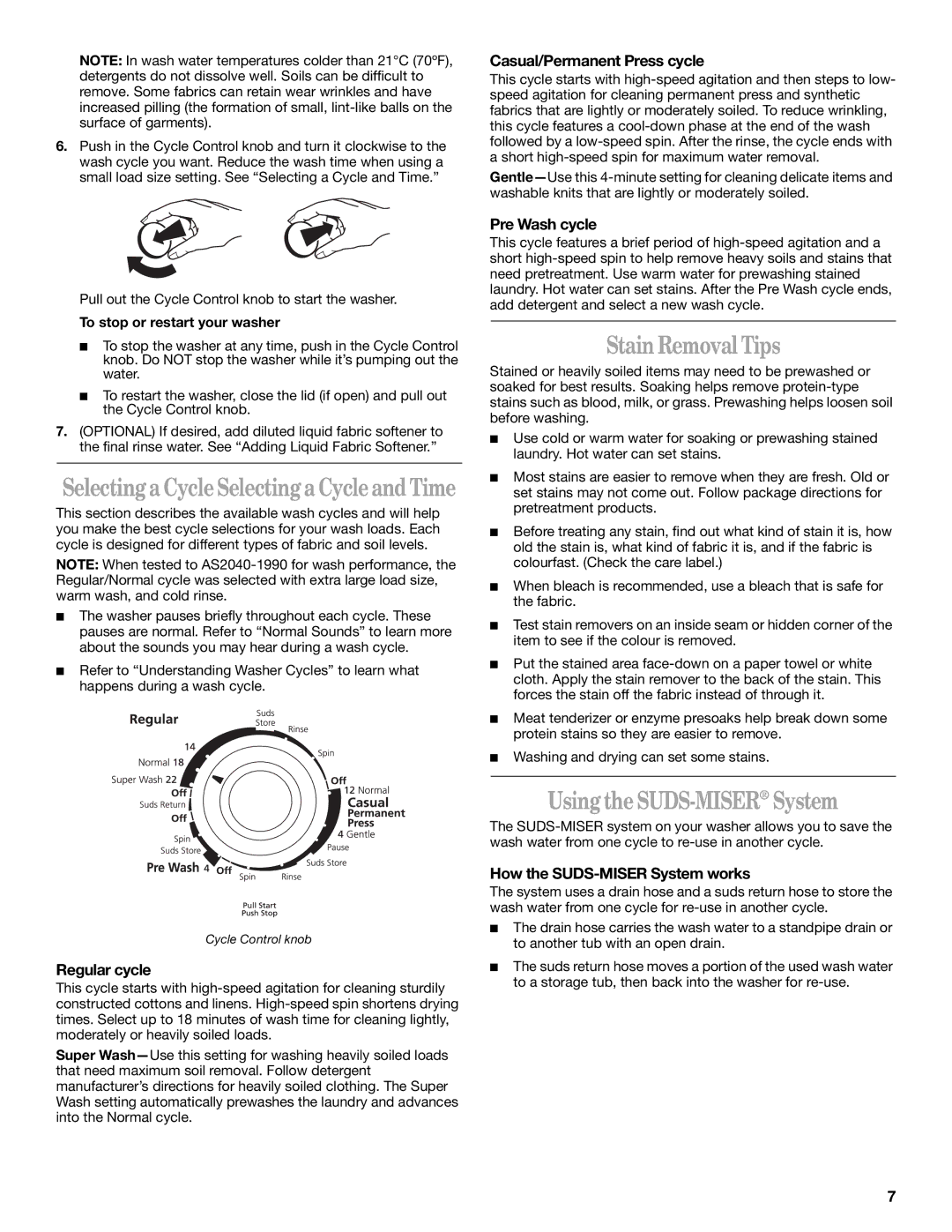
NOTE: In wash water temperatures colder than 21°C (70ºF), detergents do not dissolve well. Soils can be difficult to remove. Some fabrics can retain wear wrinkles and have increased pilling (the formation of small,
6.Push in the Cycle Control knob and turn it clockwise to the wash cycle you want. Reduce the wash time when using a small load size setting. See “Selecting a Cycle and Time.”
Pull out the Cycle Control knob to start the washer.
To stop or restart your washer
■To stop the washer at any time, push in the Cycle Control knob. Do NOT stop the washer while it’s pumping out the water.
■To restart the washer, close the lid (if open) and pull out the Cycle Control knob.
7.(OPTIONAL) If desired, add diluted liquid fabric softener to the final rinse water. See “Adding Liquid Fabric Softener.”
Selecting a Cycle Selecting a Cycle and Time
This section describes the available wash cycles and will help you make the best cycle selections for your wash loads. Each cycle is designed for different types of fabric and soil levels.
NOTE: When tested to
■The washer pauses briefly throughout each cycle. These pauses are normal. Refer to “Normal Sounds” to learn more about the sounds you may hear during a wash cycle.
■Refer to “Understanding Washer Cycles” to learn what happens during a wash cycle.
Cycle Control knob
Regular cycle
This cycle starts with
Super
Casual/Permanent Press cycle
This cycle starts with
Pre Wash cycle
This cycle features a brief period of
Stain Removal Tips
Stained or heavily soiled items may need to be prewashed or soaked for best results. Soaking helps remove
■Use cold or warm water for soaking or prewashing stained laundry. Hot water can set stains.
■Most stains are easier to remove when they are fresh. Old or set stains may not come out. Follow package directions for pretreatment products.
■Before treating any stain, find out what kind of stain it is, how old the stain is, what kind of fabric it is, and if the fabric is colourfast. (Check the care label.)
■When bleach is recommended, use a bleach that is safe for the fabric.
■Test stain removers on an inside seam or hidden corner of the item to see if the colour is removed.
■Put the stained area
■Meat tenderizer or enzyme presoaks help break down some protein stains so they are easier to remove.
■Washing and drying can set some stains.
Using the SUDS-MISER® System
The
How the SUDS-MISER System works
The system uses a drain hose and a suds return hose to store the wash water from one cycle for
■The drain hose carries the wash water to a standpipe drain or to another tub with an open drain.
■The suds return hose moves a portion of the used wash water to a storage tub, then back into the washer for
7
